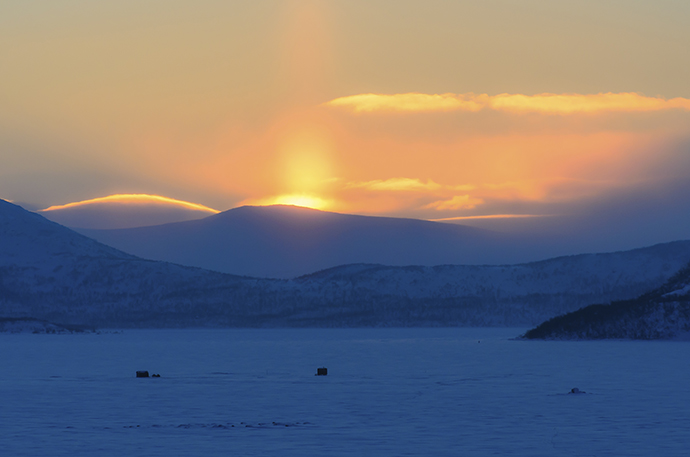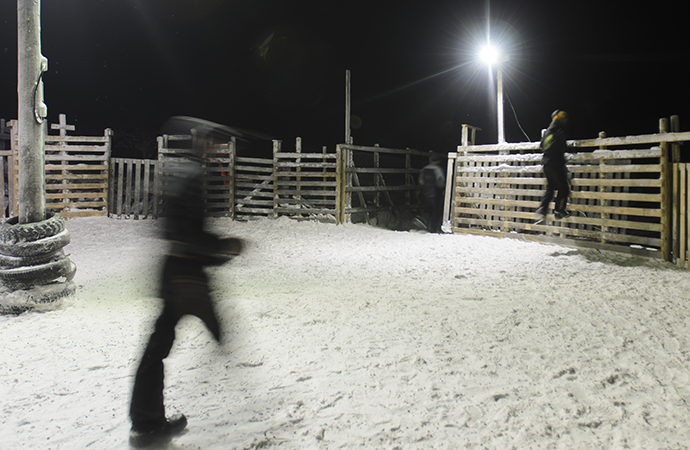The struggle over indigenous identity and status as an indigenous person is a global story, says Associate Professor Audra Simpson from Columbia University. She demands that settler states let indigenous peoples solve the question by themselves.
For Simpson, the story of the struggle over the definition of Sámi is strongly reminiscent of the history of Canadian Indians. In both cases, she says, a colonial government has seized the right to determine the identity of an indigenous person and the borders of the community.
The processes, arguments and means have been different in Finland and North America, but the results have been the same: internal conflicts, disagreements and wounded identities.
“On the one hand it’s a part of the modern problem of identity: Who am I, who do I belong to, where do I belong? But it’s also part of a global problem of settler colonialism and fundamentally undermining indigenous people’s right to govern themselves”, says Simpson.
Whiter than a white man?
In the case of the Mohawk Indians, the will of the state was expressed in the Indian Act, passed in 1876. Simpson explains its impacts as follows:
“The Canadian government took our right to determine who our own people are and took away our governance system. The Act took away matrilineal descent and our system of chiefs. It installed an electoral system of all men. Before, women appointed the chiefs. There was no voting. It was the total opposite of white, Anglo-Victorian governance.”
The Indian Act also defined the status of “Indian” in ways that were not familiar to the Indian communities. For example, until 1985 the law ruled that when an Indian woman married a non-Indian man, she lost her status as an Indian and had to leave the community and reservation physically. In addition, their children had no right to live on Indian lands or what remains of them – the reservations.
Simpson says that one of the most difficult and painful things for the community is when indigenous people themselves start to think that it is fair to let others decide for them. What was indigenous becomes “white” without even noticing it.
“Some of our people internalized the Act and thought it was fair: if you marry out, you have to leave. It all has been a very deeply lacerating process in the community.”

Rights through ancestry?
Perhaps the most important topic of dispute in the discussion of Sámi identity in Finland has been the role of ancestry. Can one be a Sámi based on one’s ancestors’ – sometimes controversial – ethnic identity even if the family has not been defined as Sámi for generations?
Simpson recognizes also this discussion from North America, where it is a popular hobby to find out one’s ancestry and sometimes redefine one’s identity based on remote forebears.
She says ancestry may be important to individuals’ personal life, but in the indigenous political context the hobby has created problems.
“It becomes problematic if a hobby translates to a political identity. It is very undermining for the people who have been consistently Indian or Sami through time and held ground because of that.”
Simpson emphasizes that in her view it should always be up to indigenous people to determine who belongs to the community and who doesn’t:
“In ideal world, where indigenous political will would matter, those who want to be Sámi would be going to the Sámi and saying, ‘I think I belong to you and I come to you with these things, my genealogy and these gifts, these offerings and so on; I understand that I’ve been away for a while and I want to come back’. Then it’s up to those potential political parties or families to see what is done.”
Compassion and indigenous identity
While emphasizing indigenous peoples’ right to self-determination, Simpson also points out that indigenous people should use this right wisely and with compassion. Not all those who have found their lost indigenous identity want to do harm to the indigenous culture.
“I have met many people who have found an Indian ancestor who lived hundreds of years ago and claim that they are Indian, when they obviously are not. But there are also people who survived the elimination of the culture, and no longer know who they are. They are not necessarily trying to be evil. But: there are also people who are trying to be evil. As humans we all have the capacity to deceive.”
“My first question is: Will settler states leave us alone enough to come to terms with this issue? But then also: Do we have it in us to think compassionately of others? I know that there is lots of justified fatigue, impatience and anger, but there is also a need for compassion.”
“This all is of course complicated, and I found myself very conflicted. When asking for compassion from indigenous people, we cannot forget the long history of usurpation and also the continuing colonization. Now, for example, the Sámi are literally told who they are, which I would imagine is very insulting.”
Audra Simpson visited University of Lapland at autumn 2015 in Etmudays conference. She is the author of Mohawk Interruptus: Political Life Across the Borders of Settler States. (2014)
***

Kiista saamelaisuuden kriteereistä ja saamelaisten oikeuksista muistuttaa Pohjois-Amerikan intiaanien historiasta, sanoo apulaisprofessori Audra Simpson Columbian yliopistosta.
Kanadassa alun perin vuonna 1876 voimaan tullut intiaaniasioita koskeva laki (Indian Act) järjesti intiaaniyhteisöjen hallinnon uudestaan ja määritteli sen, kuka sai nauttia intiaaneille kuuluvista oikeuksista.
Vuoteen 1985 saakka laki muun muassa määräsi, että jos intiaaninainen meni avioliittoon ei-intiaanin kanssa, hän menetti statuksensa intiaanina ja hänen tuli muuttaa pois reservaatista. Myöskään pariskunnan lapset eivät olleet lain mukaan intiaaneja. Tämä johti rikkoutuneisiin minäkuviin, epävarmuuteen ja riitoihin.
Yhteisöä repi Simpsonin mukaan rajusti myös se, että jotkut intiaaneista sisäistivät lain tavoitteet ja hyväksyivät asuttajavaltion oikeuden päättää intiaanien puolesta heidän omista asioistaan.
Simpson pitää Pohjois-Amerikan tapahtumia esimerkkinä siitä, millaista vahinkoa syntyy, kun valtio säätelee alkuperäiskansan asioita huomioimatta kansan omia tapoja ja käsityksiä. Hän sanoo, että alkuperäiskansojen tulee voida päättää itse kansaan kuulumisen kriteereistä ja tavoista.
Uusvanhan identiteetin ongelma
Sekä Suomessa että Pohjois-Amerikassa jotkut valtaväestöön aiemmin identifioituneet ihmiset ovat esittäneet kuuluvansa alkuperäiskansaan sillä perusteella, että heillä on esi-isiä, jotka olivat intiaaneja tai saamelaisia. Sukujen vanhan etnisyyden muuttumisen katsotaan olevan kolonialismin syytä, mistä syystä jälkeläisille pitäisi antaa mahdollisuus hävinneen identiteetin elvyttämiseen.
Simpson suhtautuu alkuperäiskansaidentiteettinsä uudelleen löytäneisiin kaksijakoisesti. Hän sanoo, että esi-isillä voi olla merkitystä yksilön minäkuvan kannalta, mutta huomauttaa, että minäkuva ja esi-isien etnisyys eivät muutu ongelmitta nykypäivän poliittiseksi identiteetiksi.
Uuden identiteetin omaksuminen kaukaisten esi-isien perusteella väheksyy apulaisprofessorin mielestä suuresti heitä, joiden suvut ovat kamppailleet ja säilyttäneet saamelaisuutensa tai intiaani-identiteettinsä tähän päivään saakka.
Toisaalta, Simpson sanoo, on olemassa alkuperäiskansaa lähellä olevia ihmisiä, jotka ovat tavalla tai toisella selvinneet kulttuurin hävittämispyrkimyksistä, mutta eivät tiedä enää, keitä ovat. Heihin alkuperäiskansan pitäisi osata suhtautua myötätuntoisesti. Kaikki intiaaniksi tai saamelaiseksi pyrkivät eivät ole petollisia.
Simpson kuitenkin huomauttaa, että myötätunnon perään kyseleminen voi vaikuttaa kohtuuttomalta tilanteessa, jossa taustalla on historiallista hyväksikäyttöä ja jossa kolonialismi edelleen jatkuu. Alkuperäiskansojen vanhat maat ovat jatkuvasti valtioiden ja yritysten taloudellisen mielenkiinnon kohteena, ja myös kansojen itsemääräämisoikeus on kyseenalainen huolimatta lupauksista ja sopimuksista.
– Esimerkiksi nyt saamelaisille kirjaimellisesti kerrotaan, keitä he ovat. Se on, voisin kuvitella, äärimmäisen loukkaavaa, Simpson sanoo.
Text and pictures: Tapio Nykänen